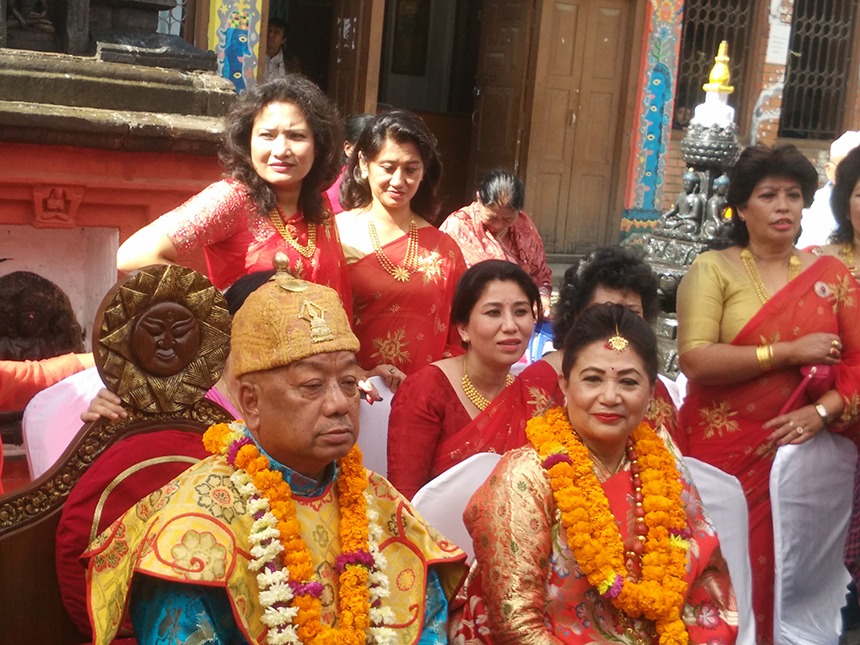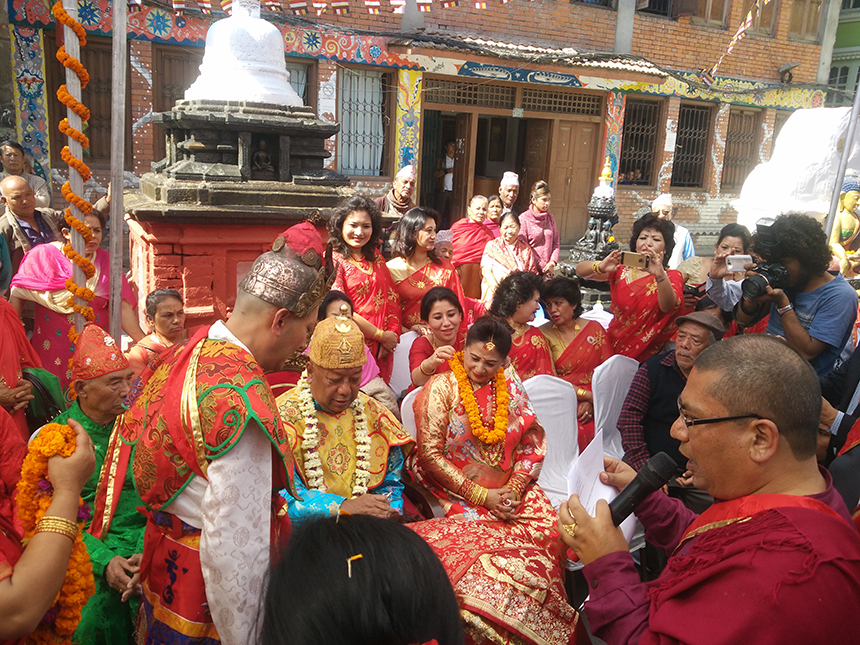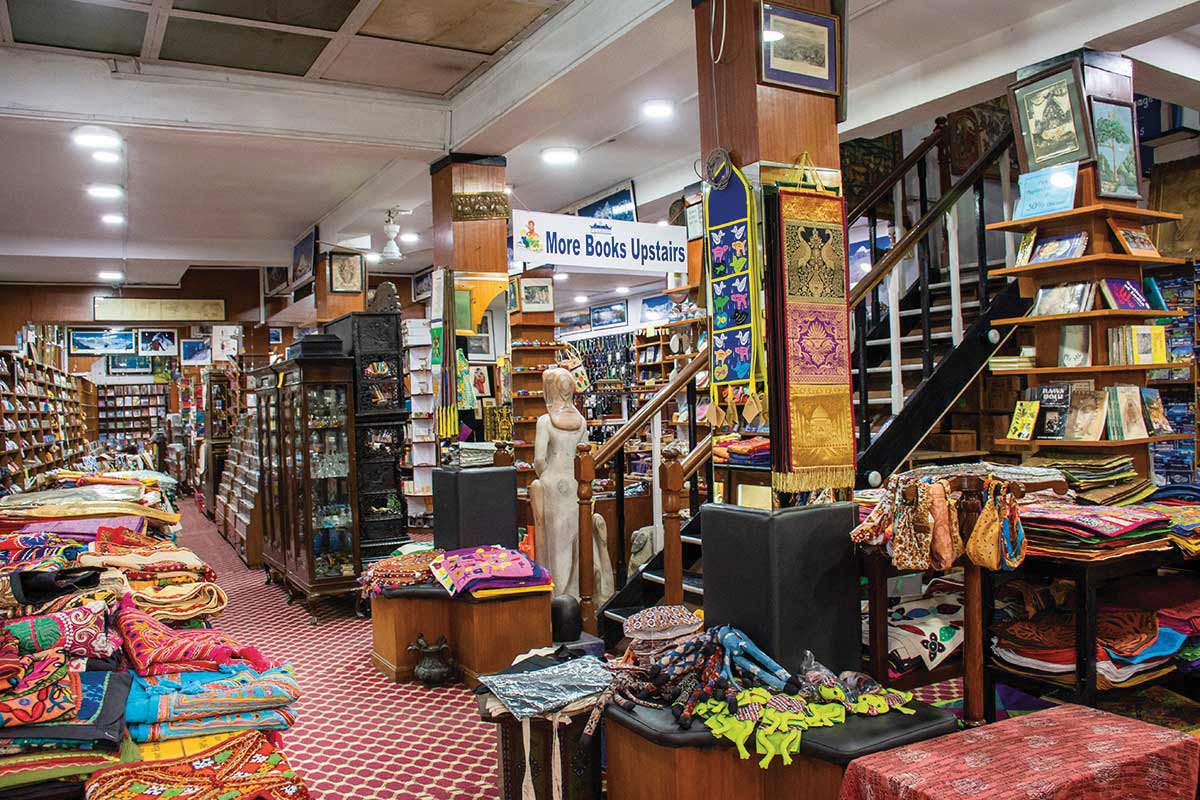
The pujas are completed, and the party is finished, too, by the time I sit down with Karna Shakya. He has just completed an induction ceremony, which he calls a “coronation,” and is now officially the most senior member and ceremonial head of his clan, or community. I’m here to learn more about this unusual and little-known ceremony, Chatra Bishek.
During medieval times, all of Kathmandu was divided into various vihars, he explains, designed for groups of people living together, community groups basically, also sometimes called guthis.
According to the Newari culture, Chatra Bishek is a very auspicious occasion; chatra means parasol, and in the ceremony, the parasol is offered to him as the senior-most member of the whole guthi. Lots of pujas have to be done as part of the process, and in fact, Karna Shakya tells me that even when he dies, that chatra must accompany him then, too. He explains that usually this happens to members who are over 80, but in his case, he became the community’s eldest member at just 75 years of age.
%20copy.jpg) |
 |
It’s a very auspicious and important part of Vajrayana Buddhism, an ancient form of the religion followed by Shakya’s family. Largely a ceremonial position, the guthi’s management committee will take care of most matters, though if there is any problem or conflict, it will be brought to him for a decision or advice. The unique and colorful brocade clothing and cap he wears for the occasion, he will now wear again only once each year, on the annual festival.
Every year, this community holds a chariot festival on purnima, full moon day; Shanti Ghata Vajradhatu Mahvihar, Shree: Gha, near Chettrapati, currently comprises more than 42 extended families. The temple itself, still a vibrant and bustling worship center amongst locals, has a famous legend. He explains, “Once upon a time, a long, long time ago a tantric guru called Wak Bajra Bajracharya brought a temple from Varanasi with his tantric power to establish here. That’s why it’s called Kaathe Swyambhu from Varanasi. And, in that place, during the Mallakalin (literal Nepali translation for ‘during the Malla era’) period, they made five huge stone vessels called gha, and these are right inside the tantric temple there. No one can see them, only selected people.” This temple complex is a very active one, important for the Varjayana Buddhism as practiced here in the vihar, and an important heritage site.
Karna Shakya helped to establish the Nepal Heritage Society back in 1982, as well as other organizations related to conservation and heritage, and we speak about the need to balance modern life with the preservation of old traditions. “I am not a fossilized conservationist, I am a rational conservationist,” he tells me, “I always believe that culture is dynamic—like a lake, a body of water where fresh water has to come in and dirty water has to go out. I’m not a fundamentalist, new things should come in, too. For me, in terms of heritage, there are two things: built-in heritage and living heritage, or culture. You have to take the approach of preservation for built-in heritage, but you cannot preserve the culture, it’s a dynamic system. You have to accept new concepts in order to survive, or you will disappear just like the dinosaur. If you really want to live in this system, you’ve got to accept new things.”









